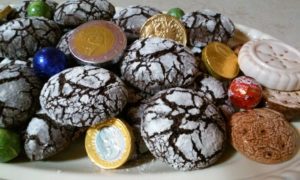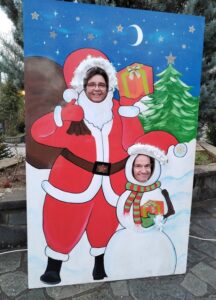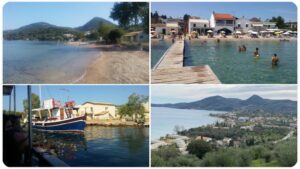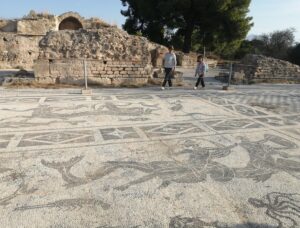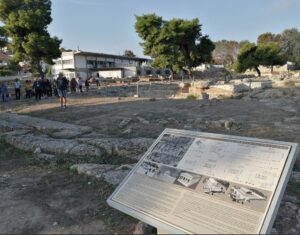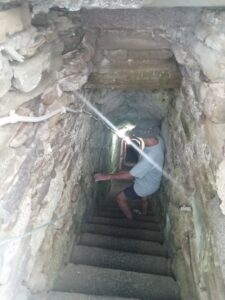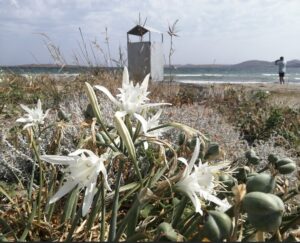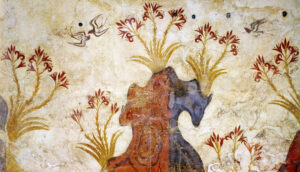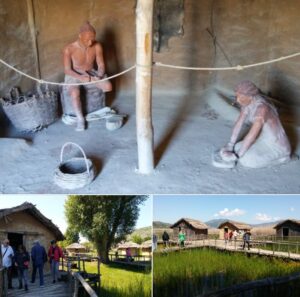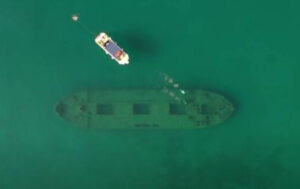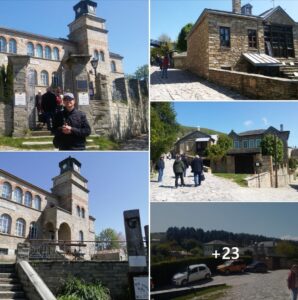The village of Pramanta in Tzoumerka, Epirus is famous for its master stonemasons (known as “mastores” or “mastoroi”).
These skilled craftsmen could produce intricate and durable structures using local stone and traditional methods. The nearby villages of Syrrako and Kalarites, which are absolutely stunning and protected under historic preservation laws, were largely built by these craftsmen.
Perhaps the most famous master stonemason of Pramanta was Kostas Bekas, who constructed the historic Plaka Bridge over the Arachthos River, the largest single-arch stone bridge in Greece.
It was completed in 1866 but suffered serious damage during the devastating flood of 2015. Today, it stands complete and accessible again, having been restored by a team of contemporary master stonemasons from Athens.
See more photographs of the Plaka bridge and details about its restoration.
Many of the traditional buildings in Pramanta were destroyed in a major earthquake in the 1970s, but the village still maintains its original charm with its beautiful paved streets and stone buildings.
The legacy of the stonemasons is preserved to this day through traditional building workshops and the work of modern-day masons such as Yiorgos Bekas, a descendant of the famous stonemason family.
As you enter the village, the first monument you see depicts a stone trowel on a rock, but that is just a small taste of the tribute the locals have paid to the huge stonemasonry legacy of the village.
Our coach parked at the edge of the high street at a crossroads. Right at the entrance of that main street, a work of art mounted on the wall depicts stonemasons at work and their various tools.
It leads the eye naturally down the street toward the main square of Pramanta and pays homage to the skillful craftsmen whose works still stand whole and beautiful today, all over the area of Tzoumerka.
The main square of Pramanta had been transformed during our visit into a Christmas wonderland for the holiday season.
On the lower side of the square, we admired a perennial plane tree and the church of Agia Paraskevi. The buildings all around looked whimsical decorated with string lights.
A sign at the square informed us that the Greek saint and avid preacher, Cosmas Aitolos (aka Cosmas the Aitolian), gave a speech to the locals at that very square in the summer of 1779.
The saint dedicated his life to preaching the gospel all over Greece and urged the people to build schools so that the Greek children could learn about the Faith and be well-grounded in Christian values.
He is thus widely cherished and celebrated by the Greek church for helping to preserve the faith and the Greek identity during a centuries-old occupation under a barbaric ruler.
Before visiting Pramanta, we had been tipped to choose the restaurant Boutzas for lunch. We weren’t disappointed. It was quite crowded in there, but we got served soon enough. Sitting by a window with a view to beautiful mountains we sampled local pie and cockerel with ‘hylopites’ pasta in an aromatic tomato sauce.
This restaurant experience was simply divine, and I urge you to visit it too if you’re ever in the area. Boutzas is situated right at the square, across from the plane tree (it is not the blue building in the photo above, but it’s standing to the right from there).
After our hearty lunch, we took some time to walk around the “Christmas wonderland” I mentioned before, which included a Santa’s grotto and a mailbox for posting letters to Santa. It was pretty cold, but fun walking around and exploring every corner of the square and the nearby streets until it was time to leave.
Our next stop was the much quieter village of Agnanta that offers stunning vistas to the mountains and the village itself on the opposite peak. The village is built on multiple levels, some houses standing on much lower ground edged by lush fields.
We had a quick coffee in Agnanta as the light of day waned fast, and soon were on our way back to our hotel in Arta, having admired the Christmas lights and a humble nativity scene once it got dark.
Visit my Facebook page to see all my photos from Pramanta and Agnanta.
Read all about the historical city of Arta and the chilling legend behind its stone bridge.
All this talk and pictures of snow-capped mountains made me think of these special low-fat cookies that I make every New Year. I call them ‘magic snowball cookies’ because in the oven they flatten and crack and take this mouthwatering shape.
They annually have pride of place on my New Year’s Eve table with the Vassilopita, i.e. the Greek traditional cake that contains a coin inside!
See this post for details and recipes for both these festive delicacies, and others too!
I will bid you adieu with this fun photo of my husband and me from the festive square in Pramanta. Merry Christmas, everyone! I will be speaking to you again a year later 😜 (Sorry, old family joke, couldn’t resist!) I meant, in January 😁 Till then, have fun and enjoy all things lovely and warm 🥰
THANK YOU FOR READING! MAKE SURE TO DOWNLOAD MY 3 FREE BOOKS BELOW 🙂 YOU WILL RECEIVE THEM INSTANTLY WITH YOUR SUBSCRIPTION TO MY FUTURE POSTS.
Hey, before you go! In my latest newsletter, I am sharing a plethora of FREE kindle books! Some in PDF format too. Check it out here!
Sharing is caring! Here’s a ready tweet for you to spread some love:
Interested in FREE books, Greek travel and easy recipes? Here's a blog you will love! #Greek #blogger #writer Share on X
3 FREE books for you! Sign up below to receive them instantly!
NEW! Clean Christmas romance. Single mother Cathy Roussos gave up on love long ago, and veterinarian Alex Rallis doesn’t believe in it, but one magical Christmas on a Santorini farm might just change everything…
Check it out on Amazon Read a FREE sample!
A clean romantic suspense short read with an unreliable narrator that’ll keep you guessing! Vera is losing her mind over famous actor Yannnis Ksenos, except, she isn’t just a fan… Now, she plucks up the courage to ring his doorbell… Visit Amazon







